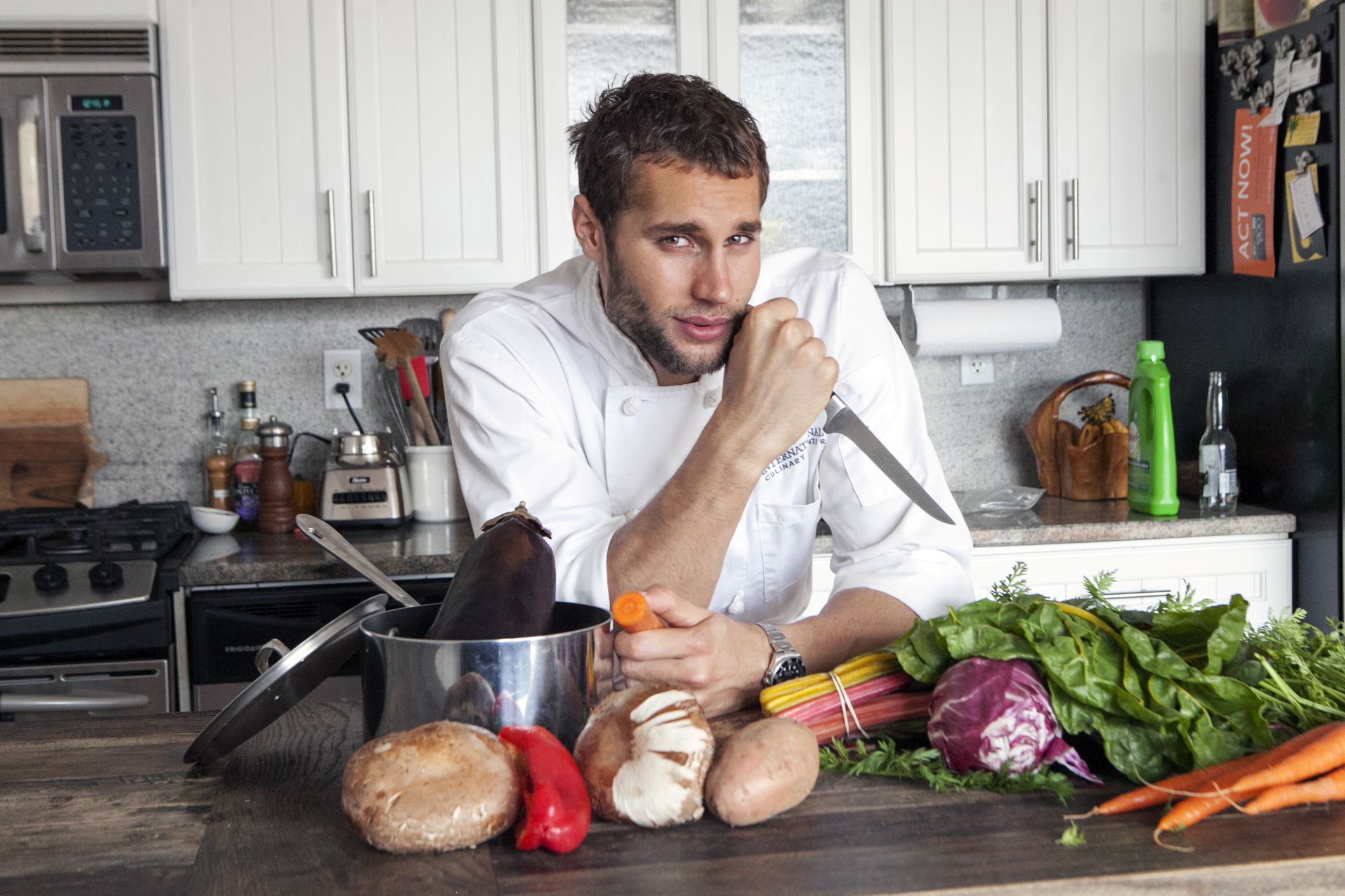Who is Franco Noriega?
Franco Noriega is a Peruvian chef, restaurateur, and former model who has gained fame for his innovative approach to Peruvian cuisine. Born in Lima, Peru, Noriega moved to New York City to pursue a career in modeling. However, his passion for cooking led him to open his restaurant, Baby Brasa, where he showcases his culinary talents and celebrates the vibrant flavors of Peruvian cuisine.
The Benefits of Peruvian Cuisine
Nutrient-Rich Ingredients
Peruvian cuisine is known for its use of fresh, locally sourced ingredients, including a wide variety of fruits, vegetables, grains, and proteins. Many Peruvian dishes feature nutrient-rich superfoods such as quinoa, amaranth, maca, and purple corn, which contribute to a well-balanced and nutritious diet.
Diverse Flavors and Influences
Peruvian cuisine is a fusion of indigenous Andean flavors, Spanish colonial influences, and international culinary techniques. From spicy ceviche to hearty stews and aromatic sauces, Peruvian dishes offer a diverse range of flavors and textures that appeal to a wide audience.
Heart-Healthy Fats
Peruvian cuisine incorporates heart-healthy fats such as avocado, olive oil, and fatty fish like salmon and trout. These fats provide essential omega-3 fatty acids, which have been linked to numerous health benefits, including improved heart health and brain function.
Sustainable Practices
Many traditional Peruvian farming practices are based on principles of sustainability and environmental stewardship. By supporting small-scale farmers and producers, Peruvian cuisine helps promote biodiversity, preserve cultural heritage, and protect natural resources for future generations.
Culinary Innovation
Chefs like Franco Noriega are at the forefront of culinary innovation, reinventing traditional Peruvian dishes with modern twists and creative presentations. Their innovative approach to cooking not only showcases the versatility of Peruvian ingredients but also helps elevate the country’s culinary reputation on the global stage.
Key Ingredients in Peruvian Cuisine
Quinoa
A nutrient-rich ancient grain native to the Andean region, quinoa is a staple ingredient in Peruvian cuisine. It is used in a variety of dishes, including salads, soups, and main courses, and is prized for its high protein content and versatility.
Aji Amarillo
Aji amarillo is a vibrant yellow chili pepper that is widely used in Peruvian cooking. It adds a distinct fruity flavor and mild heat to dishes and is a key ingredient in traditional Peruvian sauces such as aji de gallina and huancaina sauce.
Ceviche
Ceviche is a popular Peruvian dish made from raw fish marinated in citrus juices, typically lime or lemon, and seasoned with onions, cilantro, and aji peppers. It is often served as an appetizer or light lunch and is celebrated for its fresh and zesty flavors.
Potatoes
Peru is home to thousands of native potato varieties, making potatoes a fundamental ingredient in Peruvian cuisine. Potatoes are used in a wide range of dishes, from traditional soups and stews to hearty potato salads and side dishes.
Anticuchos
Anticuchos are grilled skewers of marinated meat, typically beef heart, that are a popular street food in Peru. They are marinated in a mixture of vinegar, garlic, cumin, and aji peppers, then grilled to perfection and served with a side of potatoes or corn.
Signature Dishes of Peruvian Cuisine
Lomo Saltado
Lomo saltado is a classic Peruvian stir-fry dish made with beef, onions, tomatoes, and peppers, seasoned with soy sauce, vinegar, and spices. It is typically served with rice and french fries and is a favorite comfort food among Peruvians.
Aji de Gallina
Aji de gallina is a creamy chicken dish made with shredded chicken cooked in a sauce made from aji amarillo peppers, milk, bread, and walnuts. It is often served with rice, boiled potatoes, and hard-boiled eggs and is a popular comfort food in Peru.
Pollo a la Brasa
Pollo a la brasa is a Peruvian-style rotisserie chicken marinated in a blend of spices and roasted until golden and crispy. It is typically served with french fries, salad, and aji sauce and is a beloved dish enjoyed by families and friends across Peru.
Causa Rellena
Causa rellena is a traditional Peruvian dish made with layers of mashed potatoes seasoned with lime juice and yellow chili pepper paste, filled with a variety of fillings such as chicken, tuna, or avocado, and garnished with hard-boiled eggs and olives.
Picarones
Picarones are sweet potato and pumpkin fritters flavored with anise, cinnamon, and cloves, deep-fried until golden and crispy, and served with a sweet syrup made from cane sugar, orange peel, and spices. They are a popular dessert in Peru, especially during festivals and celebrations.
Frequently Asked Questions (FAQs)
Is Peruvian cuisine spicy?
Peruvian cuisine can be spicy, depending on the dish and the use of aji peppers. While some dishes are mild and flavorful, others may have a moderate to high level of heat from spicy peppers like aji amarillo or rocoto.
What are some traditional desserts in Peruvian cuisine?
Traditional desserts in Peruvian cuisine include alfajores (shortbread cookies filled with dulce de leche), tres leches cake (sponge cake soaked in three types of milk), suspiro a la limena (creamy caramel topped with meringue), and arroz con leche (rice pudding).
Is Peruvian cuisine healthy?
Peruvian cuisine can be healthy, as it emphasizes fresh, whole ingredients such as fruits, vegetables, grains, and lean proteins. However, some dishes may be high in calories, fat, or sodium, so it’s essential to balance indulgent treats with lighter options.
Where can I try Peruvian cuisine outside of Peru?
Peruvian restaurants and eateries can be found in cities around the world, especially in areas with large Latin American communities or a growing interest in international cuisine. Many Peruvian chefs, like Franco Noriega, have opened restaurants abroad to showcase the flavors of their homeland.
What are some popular beverages in Peruvian cuisine?
Popular beverages in Peruvian cuisine include chicha morada (purple corn drink flavored with fruit and spices), pisco sour (a cocktail made with pisco, lime juice, simple syrup, egg white, and bitters), and Inca Kola (a sweet, carbonated soda with a distinctive yellow color).
Can I cook Peruvian cuisine at home?
Yes, many Peruvian dishes are relatively simple to prepare and can be made with ingredients readily available in most grocery stores. There are also many cookbooks and online resources available with authentic Peruvian recipes and cooking techniques.
What makes Peruvian cuisine unique?
Peruvian cuisine is unique due to its diverse array of ingredients, fusion of flavors and influences, and rich culinary traditions dating back thousands of years. It reflects the country’s multicultural heritage and geographic diversity, resulting in a cuisine that is vibrant, flavorful, and full of character.
Conclusion
Peruvian cuisine, with its vibrant flavors, diverse ingredients, and rich culinary traditions, offers a unique and exciting culinary experience for food enthusiasts around the world. Chefs like Franco Noriega have played a vital role in showcasing the flavors of Peru and elevating the country’s culinary reputation on the global stage. From nutrient-rich superfoods to mouthwatering dishes and innovative cooking techniques, Peruvian cuisine continues to captivate and inspire food lovers with its delicious and distinctive offerings. Whether you’re exploring traditional recipes at home or dining at a Peruvian restaurant, the flavors of Peru are sure to leave a lasting impression on your taste buds and culinary adventures.
- Unlocking Wellness A Comprehensive Review of the Top CBD Oils By Plus CBD oil - April 27, 2024
- Discover Your Perfect Match: A Personal Journey Through Just Kratom’s Kratom Capsules Collection! - April 27, 2024
- Unlocking Wellness A Comprehensive Review of Top CBD Oils By Plus CBD oil - April 27, 2024


